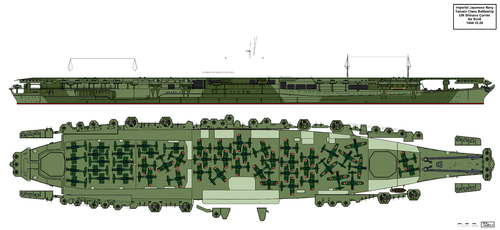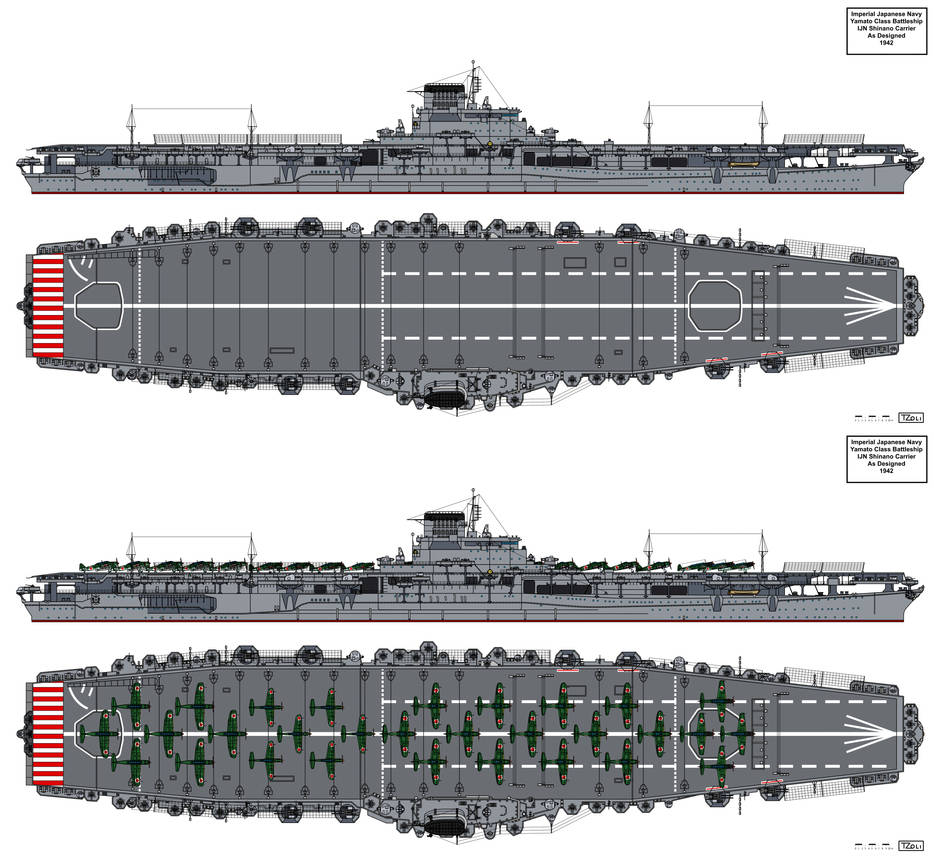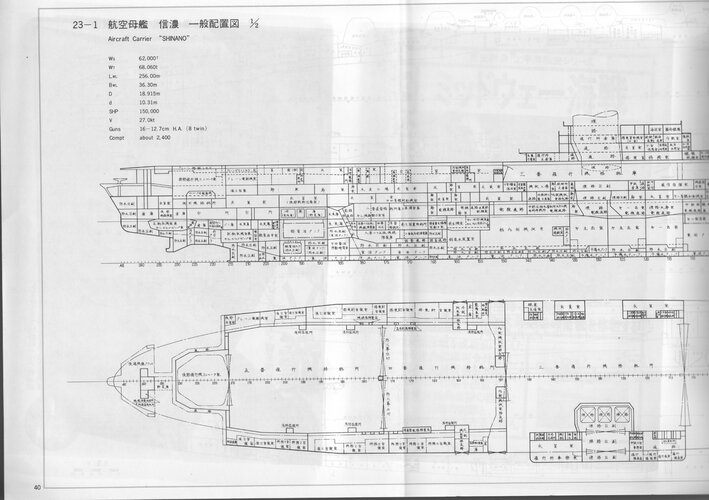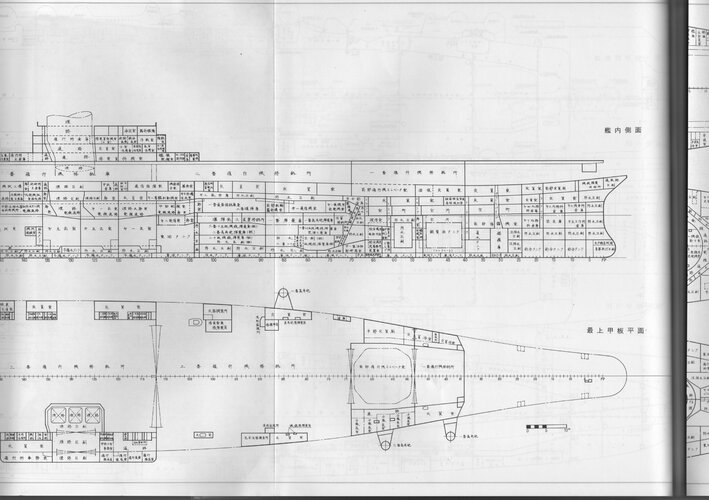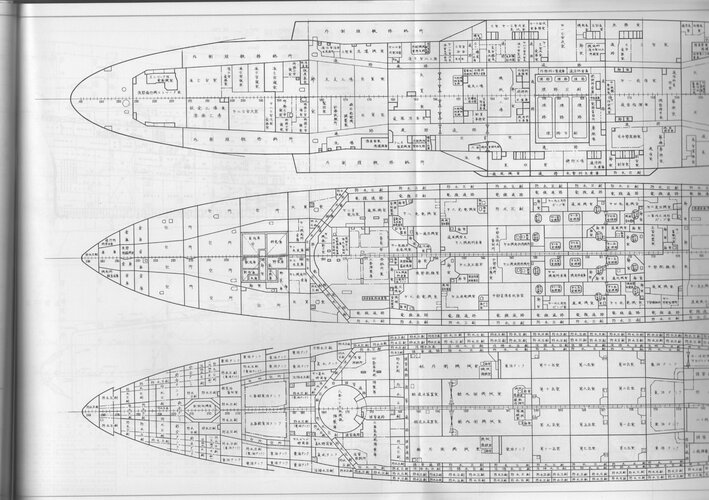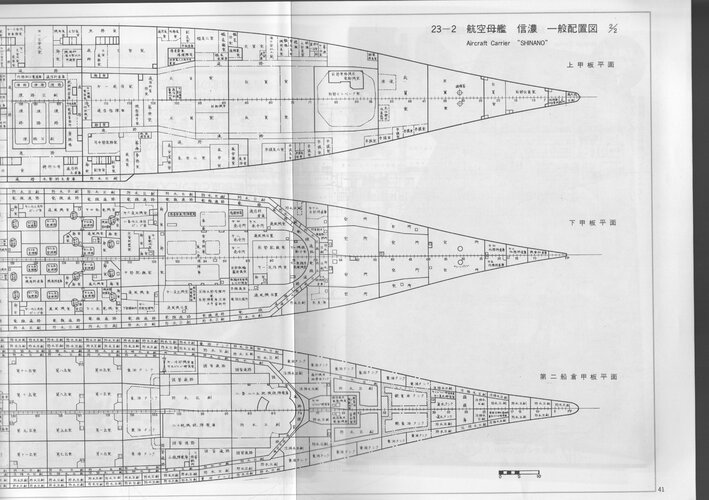Does anyone tried to calculate how much aircraft could Shinano carry in a full fleet carrier configuration?
I have a drawing of her hanger shape and using C8N Suisei, A7M Reppu and B7A Ryusei planes I determined around 50 aircraft could be easily stored in her hanger (8 Suisei the rest are Reppu and Ryusei) with another 40-50 on the flight deck giving her an Akagi-Kaga like large capacity but with modern planes. But I wish to ask your opinions on this matter.
I don't know much about the construction of warships. I don't even know what I'm saying is possible.
But what's interesting is that USS Lexington was built way before WW2 and shortly after WW1 when aircraft carriers came under question about their purpose. Now USS Midway was built in 1945 as the future of aircraft carriers and as the war came to a close in 1945.
Now the reason Shinano has a high tonnage is that she was to be built as a battleship. Yamato was 69,000 tons. Rewinding it back, say the Japanese decided to covert Shinano earlier and were able to convert it into a proper carrier. Even in deciding earlier to covert her. Her design would be vastly different because her outline in the dockyard would be 265.8 meters and she would be at least 50% complete. Maybe more. Therefore if you're going to construct an aircraft carrier to her true tonnage of 67,000 tons, her dimensions would have to be readjusted to fit in accordance with an aircraft carrier of 67,000 tons because she's half-built. The major difference in dimension is that she would have been lengthed to fit in accordance with 67,000 tons. Now, this bit I don't know. How much extra tonnage would equate between 265.8 meters and 305 meters to meet 67,000 tons? Despite this, her overall length could be even longer, anything from 305 to 340 meters.
The reason I say this is because Midway was 305 meters and 45,000 tons. Shinano is 23,000 tons more than Midway. Finally, if anything is to go by, if Lexington can carry 78 aircraft and Midway could carry 137 then Shinano would theoretically carry something in the region of 150+
The Japanese most definitely would not have redesigned and constructed to her true potential because it is a logistical and construction nightmare. It would require the bow to be dismantled to lengthen her for a start. They would have just converted her according to her length of 267 meters but she still would have been massively overweight of 67,000 tons. In this configuration, her full potential would still not have been met because she'd carry fewer aircraft according to her true weight.
(See table for details)
| Year built | Ship | Tonnage | Overall Length (Meters) | Aircraft |
| 1944 | Shinano | 67,000 | 265.8 | 47 |
| 1945 | Midway | 45,000 | 305 | 137 theoretically, 100 reality |
| 1927 | Lexington | 36,000 | 270.7 | 78 |
I suppose this explanation emphasises how complicated it would have been to covert her to an aircraft carrier. Ideally, she should have been built like a battleship otherwise she should have been scrapped but it was wartime so they couldn't.

